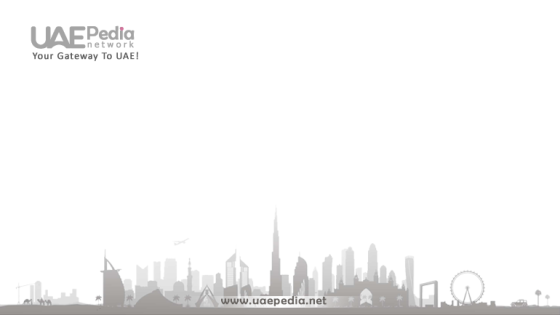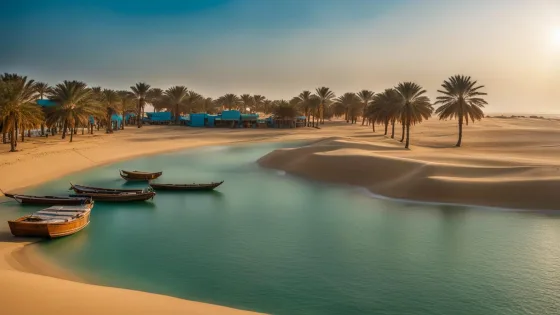Geography of the United Arab Emirates (UAE). In this article, we will take you on a journey to discover this fascinating country’s natural and human-made wonders and the diverse landscapes and unique features that make the UAE a truly remarkable place.
The UAE is in the southeastern part of the Arabian Peninsula, bordered by Oman to the east and Saudi Arabia to the south and west. The Persian Gulf surrounds the country’s north coast, which stretches over 700 kilometers. The UAE comprises seven emirates, each with its unique geography and topography.
Desert and Oasis
Much of the UAE is desert, with vast expanses of sandy terrain covering the country’s interior. The Rub’ al Khali, or Empty Quarter, is the largest continuous sand desert in the world and covers a significant portion of the UAE’s southern region. Despite the arid conditions, the country’s many oases provide pockets of greenery and fresh water, allowing for human habitation and agriculture.
Mountains and Coastline
The eastern border of the UAE is home to the Hajar Mountains. This range extends from the Musandam Peninsula in the north to the east coast of Oman. These mountains are a stunning sight. Their rugged peaks and steep valleys create an impressive landscape rich in natural resources such as minerals and fossils. The UAE’s coastline is equally remarkable, with pristine beaches and crystal-clear waters perfect for swimming, diving, and watersports.
Climate and Weather
The UAE has a hot and arid climate, with temperatures reaching 50 degrees Celsius in summer. However, the country’s coastal areas benefit from a more moderate climate, with cooler temperatures and higher humidity levels. The UAE also experiences occasional rainfall, particularly during the winter months, which can transform the desert landscape into a lush carpet of green.
| Emirate | Capital | Area (km²) | Population (2021) |
|---|---|---|---|
| Abu Dhabi | Abu Dhabi | 67,340 | 3.2 million |
| Ajman | Ajman | 460 | 540,000 |
| Dubai | Dubai | 4,114 | 3.4 million |
| Fujairah | Fujairah | 1,166 | 225,000 |
| Ras Al Khaimah | Ras Al Khaimah | 1,684 | 475,000 |
| Sharjah | Sharjah | 2,590 | 1.8 million |
| Umm Al Quwain | Umm Al Quwain | 777 | 85,000 |
Conclusion
The UAE’s unique geography and topography make it a fascinating and diverse country. There is something for everyone in the UAE, from the vast deserts to the verdant oases, from the rugged mountains to the pristine beaches. We hope that this guide has provided you with a comprehensive overview of the UAE’s geography and given you a greater appreciation for this remarkable country.












